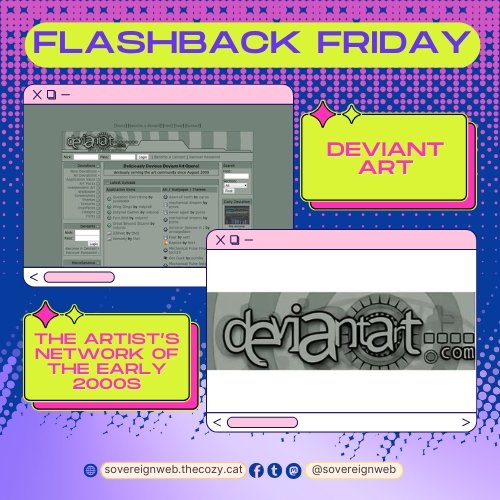DeviantArt wasn’t just a website—it was a rite of passage for an entire generation of online creatives. Launched in 2000, it quickly became a haven for artists, writers, photographers, and daydreamers looking for a space to share their work and connect with others who got it. Whether you were posting anime fan art, angsty poetry, or lovingly crafted Sonic OCs, DeviantArt gave you a stage—and more importantly, an audience. For many teens, it was the first place they felt truly seen and validated for their creativity, especially in a world that didn’t always understand their passions offline.
The site’s culture was as colorful and chaotic as the art it hosted. There were unspoken codes of conduct, intense fandoms, and sprawling comment sections where critiques, collaborations, and conversations flowed freely. Watching your pageviews tick upward or getting a llama, “fav” or thoughtful comment could make your entire week. Profile pages became digital homes, each one meticulously customized with skins, journal entries, and stamps that proudly displayed your obsessions and identity. For some, DeviantArt was the first time they openly explored their interests or artistic voice—and that freedom to experiment shaped not just portfolios, but people.
Beyond just posting art, DeviantArt fostered a community culture of interaction and growth. Art trades and request threads built connections. Critique groups helped young artists improve their skills with peer feedback. And let’s not forget the legendary drama—flame wars, call-out journals, and mysterious profile disappearances were all part of the DA experience. But even the drama reflected how invested people were; it was messy, emotional, and deeply human. You weren’t just uploading drawings—you were participating in a digital ecosystem where artistry and self-expression ruled.
Though DeviantArt still exists today, it’s a very different space from the one many of us remember. The rise of faster-paced platforms like Instagram and TikTok has shifted the online art landscape, and DA’s redesigns and changes in community culture have left some longtime users nostalgic for the old days. Still, its legacy remains intact. DeviantArt taught countless young creators not just how to draw or write—but how to be artists. It was a place where imagination ran wild, identities formed, and creativity was currency. For many, it wasn’t just a website. It was home.
—–
What was the very first thing you ever posted on DeviantArt—and do you still have it? How did DeviantArt shape your creative identity growing up? If the old-school DeviantArt vibe came back, would you jump back in with your art today? Let us know!
@sovereignweb @indieweb @neocities @smallweb @webdev @blog @webdesign



